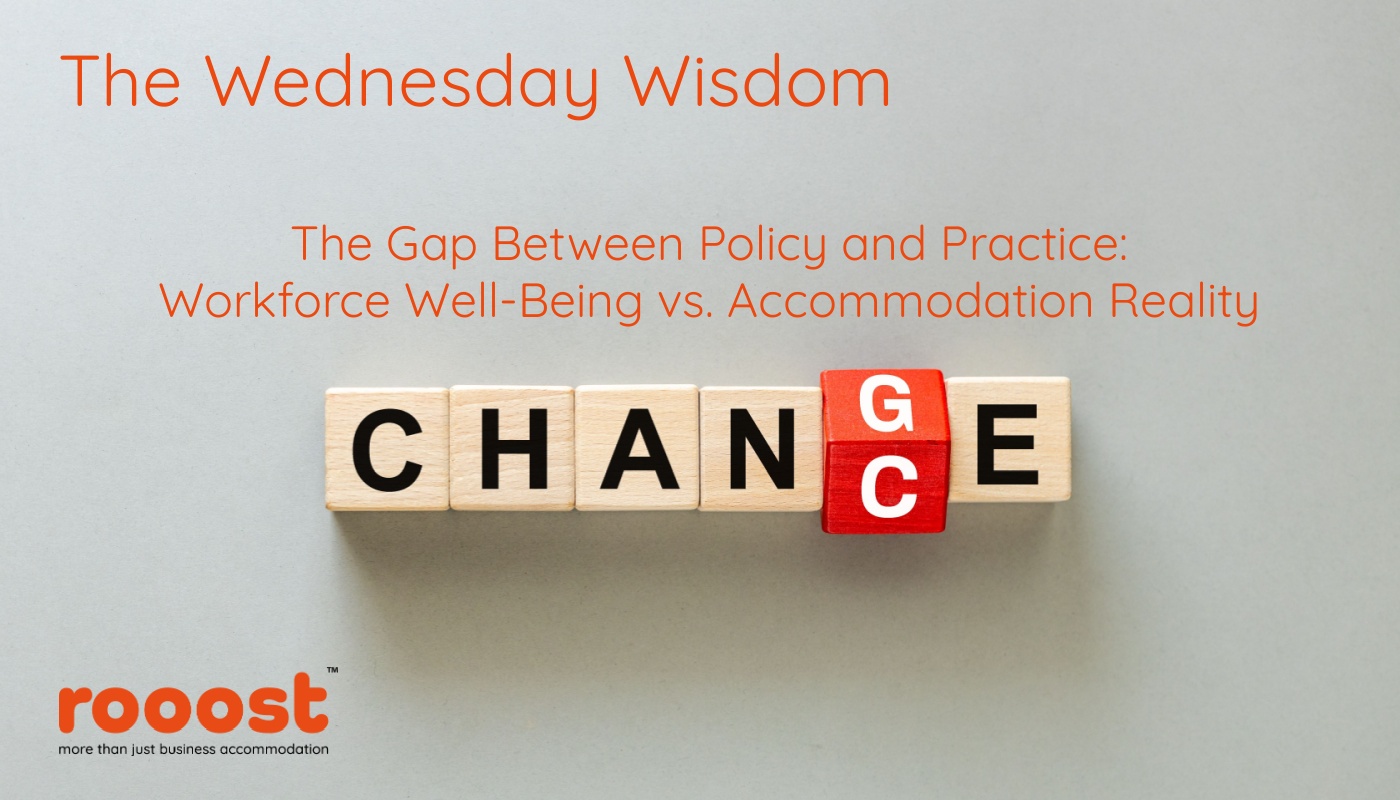The Gap Between Policy and Practice: Workforce Well-Being vs. Accommodation Reality

Many large corporations actively promote employee well-being, investing in mental health programs, fitness initiatives, and flexible working arrangements. However, these same principles often fall short regarding workforce accommodation for employees working away from home. While organisations claim to prioritise employee welfare, the reality of temporary housing arrangements frequently contradicts these commitments.
Corporate Well-Being Policies: A Promising Start
In recent years, businesses have increasingly recognised the importance of employee well-being, implementing measures such as mental health support, gym memberships, and wellness initiatives. These policies demonstrate an understanding that happy, healthy employees contribute to higher productivity and job satisfaction. Companies acknowledge that stress, poor sleep, and lack of exercise can negatively impact performance and morale.
However, despite these efforts, many businesses overlook a critical aspect of employee well-being: the quality of accommodation provided when workers travel for extended periods. Whether for short-term projects, long-term assignments, or rotational work, accommodation conditions play a significant role in overall well-being, yet they often remain an afterthought.
The Reality of Workforce Accommodation
Many employees required to work away from home are placed in substandard living conditions that fail to support their well-being. Common issues include:
- Inadequate Sleeping Arrangements: Poor-quality mattresses, noisy environments, and cramped living spaces disrupt sleep, directly impacting productivity and mental health.
- Lack of Access to Healthy Food: Some accommodations lack cooking facilities, forcing employees to rely on unhealthy, processed foods or expensive dining options.
- Limited Recreational and Fitness Options: While companies may provide gym memberships at home, many fail to consider exercise options for remote employees. Without support, it can lead to a decline in physical health and increased stress.
- Isolation and Loneliness: Employees working away from home often experience social isolation, exacerbated by poor accommodation choices in remote or poorly connected areas with little access to social activities or community support.
- Insufficient Workspace: While companies promote hybrid and remote work, accommodation often lacks the necessary infrastructure, such as ergonomic workstations and reliable WiFi, to support productivity.
Bridging the Gap: Aligning Policy with Practice
To truly support employee well-being, corporations must ensure that workforce accommodation aligns with the principles they apply to office-based employees. Steps to achieve this include:
- Providing Comfortable and Secure Housing: Ensuring that accommodation meets minimum comfort, security, and hygiene standards.
- Facilitating Access to Nutritious Food: Offering meal allowances or accommodations with proper kitchen facilities.
- Ensuring Fitness and Recreation Facilities: Providing access to gyms, wellness spaces, or accommodations near parks and fitness centres.
- Encouraging Social Well-Being: Selecting accommodations near social hubs, arranging networking events, or facilitating virtual support groups.
- Supporting Remote Work Needs: Guaranteeing high-speed internet, dedicated workspaces, and necessary tech support.
Conclusion
Workforce accommodation should not be an afterthought but a fundamental part of a company's well-being strategy. By addressing these gaps, organisations can enhance employee satisfaction, boost productivity, and demonstrate a genuine commitment to the well-being of their workforce.

 share
share